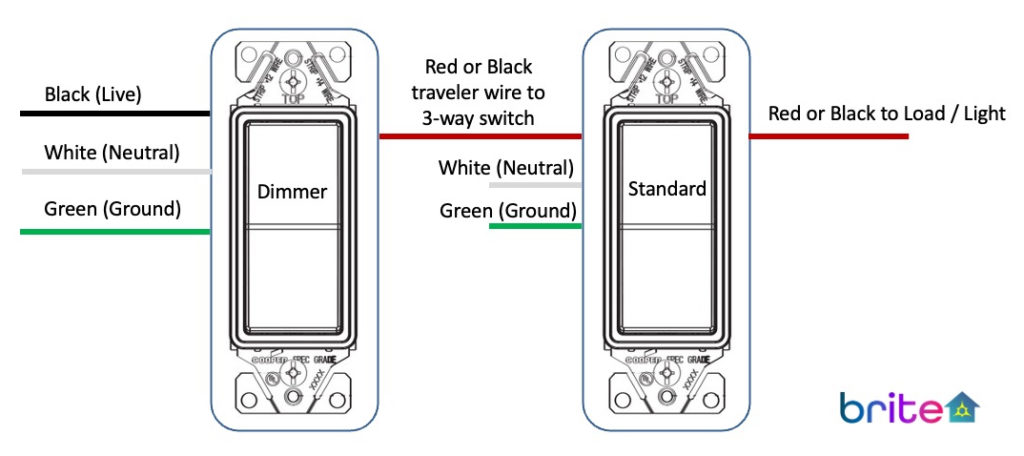Understanding 3-Way, Multiway, and Whole House Control

Founder, Nuro Technologies

A pair of switches used to control the same light source. One of the switches can be a dimmer switch that is compatible with dimmable light source, while the other switch is a standard on/off switch used to turn the light on or off at the dim levels set by the dimmer switch.

The diagram above illustrates the typical wiring used for a 3-way switch. The 3-way switch is used in conjunction with a primary switch to control a light source. While the primary switch can be a dimmer switch, the 3-way switch is usually a standard on/off switch, as traditional 3-way wiring does not support dimming at both ends.
Modern Smart Switches
Like the BriteHome solution features advanced technologies that allow for dynamic dimming at both ends. Additionally, BriteHome’s solution enables sharing of sensor data across the 3-way group, which means that motion or ambient status information from either switch can be used to control the light source.

A multi-way setup is used when more than two light switches are required to control a single light source. Like traditional 3-way switches, one of the switches in a multi-way configuration can be a dimmer switch that is compatible with dimmable light sources, while the other switches are standard on/off switches that turn the light on or off at the dimming level set by the dimmer switch.
As the number of switches in a multi-way setup increases, the wiring becomes more complex and expensive.

Whole-house lighting control systems allow you to control all the lights in your home from a single light switch or multiple switches. These systems typically involve a central control panel and require extensive wiring.
While these systems offer comprehensive control over your home’s lighting, they require professional installation and management.

BriteHome’s lighting solution offers advanced features that you’d expect from a high-end lighting control system, and even more. Using sophisticated sensors and software intelligence, it goes beyond traditional whole house light control to provide:
All of these features are available through a light switch, without the need for extensive wiring or a central control panel, making it an affordable and accessible solution for anyone.
Source: California Energy Commission